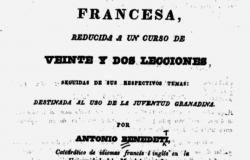Mystery on the North Coast (The Glanarma Tapes)directed by Tony Devlin, adds to the feat footage fee with a modest proposal but loaded with local resonances, set in the farther Northern Ireland, where the story still whispers among the trees. The trigger for the story is the disappearance of a group of students in the forest of Glanarma, whose last recorded activity – the images recorded with their own cameras – composes the cursed footage that shapes the film. From its formal structure to its political insinuations, the tape proposes a horror that emerges from both the inexplicated and the silenced.
Unlike other subgenre products that fall into the effectiveness or overexploitation of Jump Scare, fear progresses in silence, as a humidity that is gaining ground. Devlin does not seek to scare immediately, but introduce the viewer in a spiral of progressive tension. The forest, as a symbolic space, is not only scenario but memory capsule, where the supernatural is overlap with the historical. And that reading, even if it is not underlined, floats in the background as a constant fog.
The film manages to maintain its premise within realistic margins, without betraying the logic of the material found: there are audio errors, abrupt cuts, nervous looks outside the field, and all that helps to cement the likelihood of the story. The naturalism of the actions – especially the genuine bewilderment of the characters by losing control of the situation – plays in favor of the immersive effectwhich is key for the viewer to commit emotionally to the experience.
Where the film really stands out is in its ability to hint. What happens exactly with students is not clearly explained, but accumulated clues – visions, sounds, fragmentary records – suggest a disturbing presence that escapes both scientific understanding and classical myth. And there is a subtle criticism of the way in which society processes trauma: it records it, files it, and then forget it.
Devlin does not seem interested in giving closed answers, but in leaving questions floating. That decision, although frustrating for some, enhances the cursed character of the footage. There are no explicit monsters or emotional resolution here: only a growing feeling that something is deeply broken. And in that sense, the film reminds other jewels contained from the genre such as Lake Mungo (2008) o The Borderlands (2013), where fear arises from a vacuum, from what we do not see, and what we intuit too late.
The final result is not revolutionary, but it does honest and functional. At a time when commercial terror seems to be divided between automatic scare and hyperbolic metaphor, “mystery on the north coast” finds its hole by growing a simpler but equally effective fear: The fear of getting lost, to disappear without explanation, since nobody wants to look too long where it happened.
THE BEST: The contained atmosphere and the commitment to a realistic internal logic that does not betray the genre. The use of forest as collective memory.
WORST: Your refusal to offer a clear resolution can be cold to those who seek catharsis or answers. The rhythm, at times, brushes the inertia.
By Roberto Martín.






